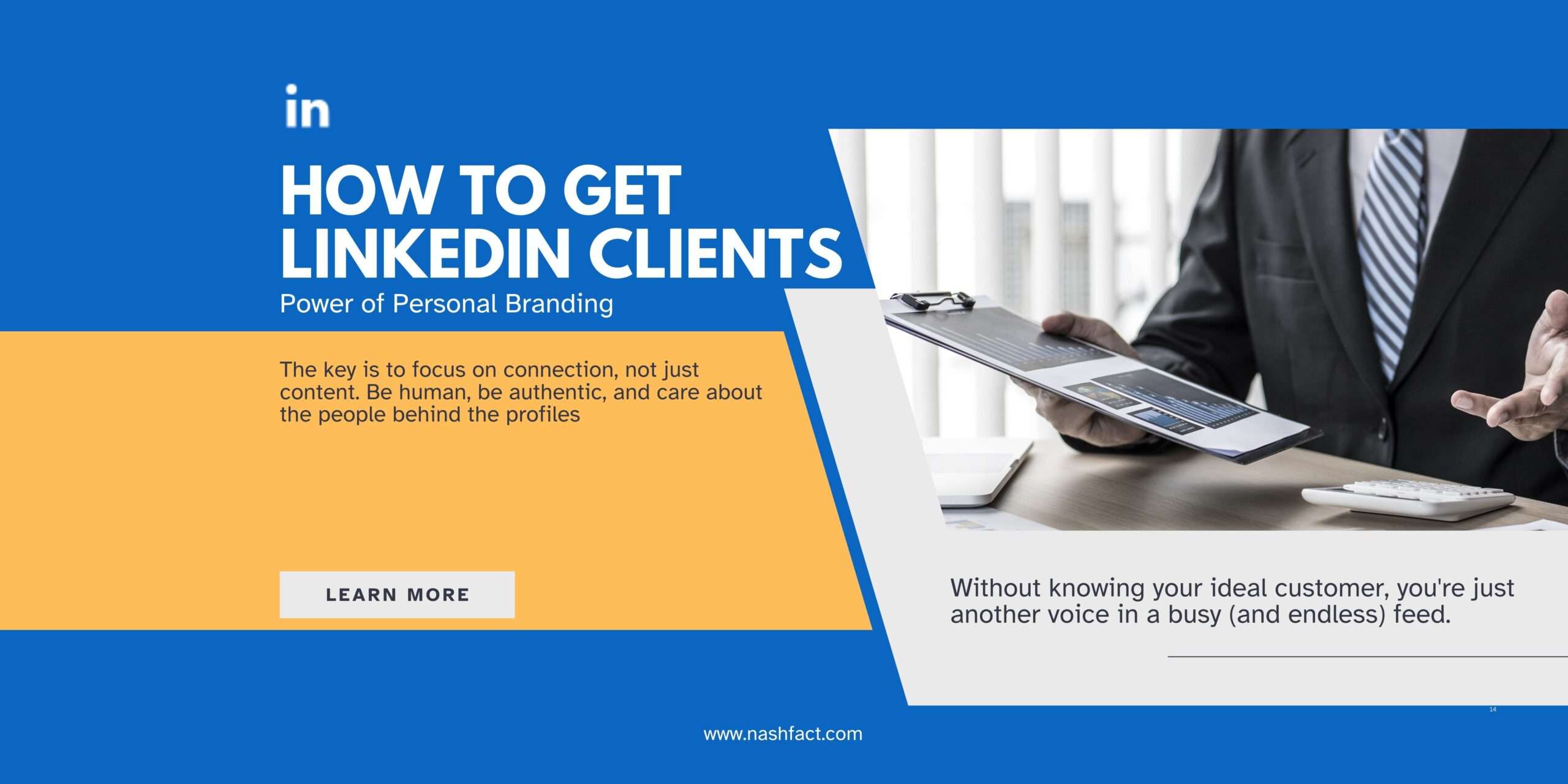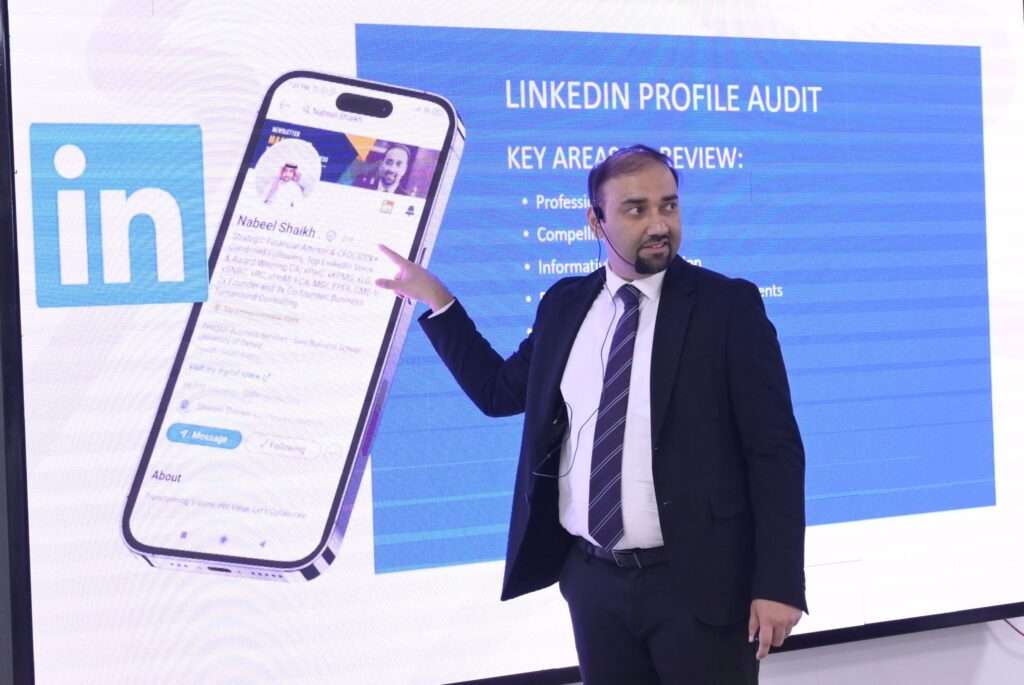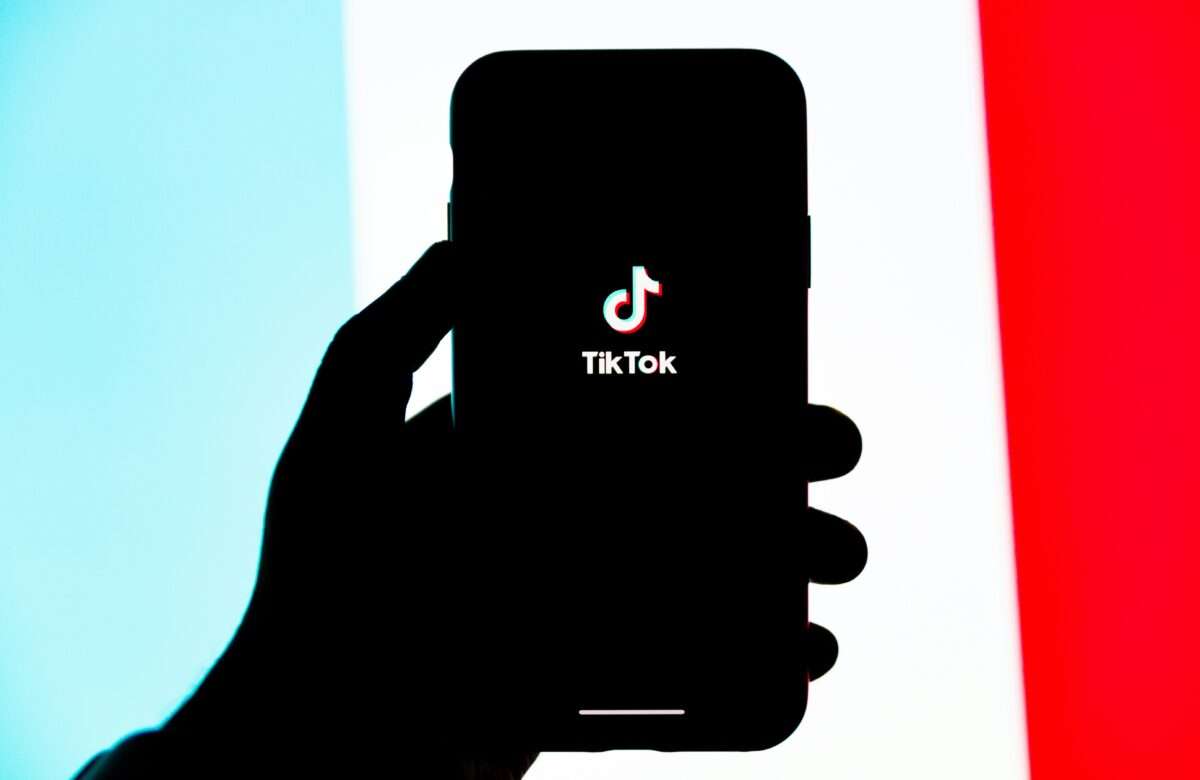- 7 February 2025
- No Comment
- 618
How to Turn Connections into Clients: Dominate LinkedIn in 2025

LinkedIn is a strange place. On one hand, it’s a goldmine for opportunities. On the other hand, it’s flooded with cringey sales pitches, vague motivational posts, and people humble-bragging about their “hustle.”
If you’ve ever spent hours crafting the perfect post only to watch it get three likes and a comment from your cousin, I feel you.
But here’s the good news: LinkedIn doesn’t have to be a place where good content goes to die. When used the right way, it can be one of the most powerful tools in your business toolkit. The secret? It’s not about spamming people with connection requests or posting inspirational quotes every morning.
It’s about real, human connections—and I’m going to show you exactly how to make them.
Step 1: Stop Sounding Like a Robot
You know those automated messages that hit your inbox the second you accept a connection request? The ones that say, “Hi [Your Name], I’d love to connect and explore synergies!” Yeah… no one likes those.
They’re the LinkedIn equivalent of a cold call from a telemarketer at dinnertime.
If you want to stand out, drop the copy-paste nonsense and talk like a real person. When someone comments on your post, don’t just ignore them—send them a quick message:
Like “Hey [Name], I really appreciated your comment on my post about [topic]. I’d love to hear your thoughts—what resonated with you?”
Boom. You just started a conversation. And guess what? Conversations lead to relationships. Relationships lead to opportunities.
Step 2: Know Your Ideal Client (Like, Really Know Them)
Here’s a hard truth: If you don’t know who you’re trying to reach, you’re just shouting into the void.
LinkedIn is packed with potential clients, but you’ll never find them if you’re not looking in the right places.
Take a moment to define your ideal client. Ask yourself:
- What’s their job title?
- What industry are they in?
- What are their biggest challenges?
Once you know this, start actively searching for them. Engage with their posts, comment with valuable insights, and build connections naturally instead of sending random invites.
Pro tip: Use LinkedIn’s “save profile” feature to bookmark ideal clients. This way, you can keep track of what they’re posting and find ways to add value.
Step 3: Be Selective with Your Connections
Yes, LinkedIn lets you connect with up to 30,000 people—but that doesn’t mean you should accept every request that comes your way.
Before hitting “Accept”, ask yourself:
- Does this person align with my target audience?
- Would I actually want to have a conversation with them?
If the answer is yes, send them a quick, friendly message
This does two things: It starts a conversation and builds a real relationship instead of just adding another number to your connection list.
Step 4: Show Up Consistently (But Don’t Be Annoying)
Posting randomly once a month won’t get you noticed. But neither will posting three times a day with zero engagement.
Here’s how to show up the right way:
✔ Post valuable content: 2-3 times a week is enough. Share insights, lessons learned, or industry tips that actually help people.
✔ Engage daily: Spend 10-15 minutes commenting on other people’s posts. And no, not just “Great post!”—actually add something useful to the conversation.
✔ Be yourself: People can smell inauthenticity from a mile away. Write like you talk, and don’t be afraid to show your personality.
Step 5: Use Your Inbox the Right Way
Your LinkedIn inbox isn’t just for spam and cold pitches—it’s where real business happens. But if yours is a mess of unread messages and salesy DMs, let’s fix that.
✔ Set aside time every day to respond to messages.
✔ Make every conversation meaningful—ask follow-up questions, show genuine interest, and look for ways to help them first.
✔ Turn conversations into opportunities—when the time is right, don’t be afraid to suggest a call or collaboration.
Example message:
“Hi [Name], thanks for reaching out! I’d love to hear more about what you’re working on. What’s been your biggest challenge lately?”
This isn’t just polite—it’s strategic. You’re building familiarity and trust, which are the foundations of any successful business relationship.
Step 6: Use Tools (But Don’t Let Them Replace You)
There are tons of LinkedIn automation tools out there—schedulers, AI post generators, lead scrapers… you name it.
And while they can save time, they can’t replace real human connection.
✔ Use scheduling tools to stay consistent.
✔ Check analytics to see what’s working.
✔ Avoid auto-messaging tools that make you sound robotic.
At the end of the day, people do business with people, not bots.
Step 7: Be Patient (But Persistent)
Building a presence on LinkedIn takes time. You won’t go viral overnight, and that’s okay. The goal isn’t to be famous; it’s to build real relationships that lead to real opportunities.
So keep showing up. Keep engaging. Keep adding value. Over time, you’ll start seeing results.

Final Thoughts: The Power of Personal Branding on LinkedIn
Personal branding on LinkedIn isn’t about posting flashy event pictures or chasing likes—it’s about delivering real value that resonates with your audience. It’s about positioning yourself as a thought leader, engaging in meaningful conversations, and showcasing your expertise in a way that builds credibility and trust.
My journey has been about consistently sharing insights, experiences, and knowledge with the LinkedIn community. And the impact? it has been recognized—I’m (Nabeel Shaikh aka Nabeil Schaik) honored to be ranked among the Top 200 LinkedIn Content Creators in KSA, securing #5 in Corporate Finance and #53 overall by Favikon.
But beyond rankings and numbers, the real power of personal branding lies in the relationships you build, the opportunities you unlock, and the influence you create. At the end of the day, people connect with people—not just businesses. Look at Elon Musk—his personal brand is bigger than Tesla and SpaceX combined. Why? Because people trust and follow the person behind the brand.
And that’s exactly how LinkedIn works. You’re not just another profile in the crowd—you’re an expert, a problem solver, and a thought leader in your space. But here’s the thing: If you don’t talk about your expertise, no one will know about it.
So instead of just scrolling through posts, start showcasing what you bring to the table:
✔ Your industry knowledge
✔ The big challenges you’ve helped solve
✔ The services you offer and who they benefit
✔ Your real-world experiences and insights
The more you share, engage, and connect, the more opportunities you create—not just for business but for building a lasting reputation.
LinkedIn isn’t just a platform—it’s your stage. So step up, own your story, and let the world know why you’re someone worth listening to.
Read more: How to Beat the Fear of Becoming Obsolete
A few months ago, I was chatting with a friend who’s a graphic designer. She’s incredibly talented, but she confessed that she’d been losing sleep over AI art generators. “What if clients stop hiring me because they can just type a prompt and get a design in seconds?” she asked. I could hear the frustration and fear in her voice. And honestly, I get it. It’s scary to think that something you’ve spent years mastering could suddenly feel… replaceable.
But here’s where I think we’re getting it wrong. Read more

